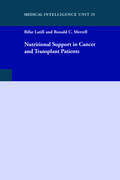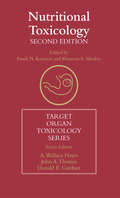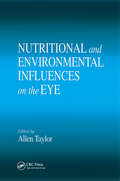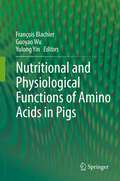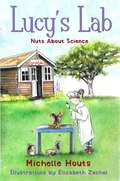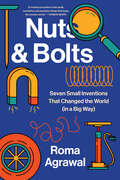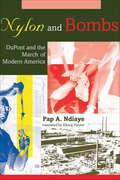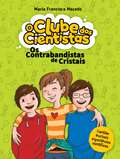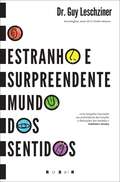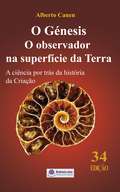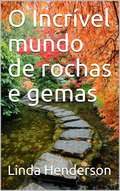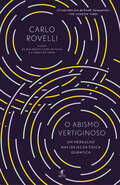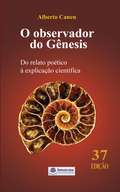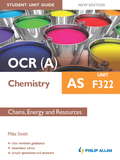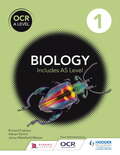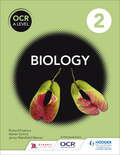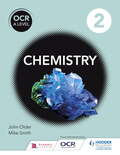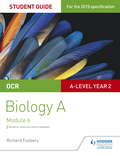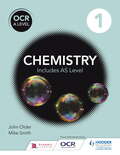- Table View
- List View
Nutritional Support in Cancer and Transplant Patients
by Rifat Latifi Ronald C. MerrellMuch has been learned, great developments have occurred, and so much has been written about cancer and transplantation in the last 2-3 decades. Yet, to the author's knowledge, no monograph or book has addressed nutrition support of cancer and transplant patients together. Experts from the around the world have addressed the nutrition support in cancer and transplant patients in this unique monograph. The book is divided in two parts: Part I deals with nutrition support in cancer patients, including the specific role of nutrition on immunity, cancer cachexia, and the role of different substrates. Part II addresses nutrition in transplant patients. The first two chapters deal with the immunologic role of nutrition and cancer cachexia. Chapter 3 elegantly and extensively reviews the nutritional implications; its biochemistry and the role of one of the most studied amino acids in clinical practiceNglutamine. This is followed by two chapters of nutrition support of patients with head and neck cancer and nutrition support of patients with gastrointestinal cancer. Chapters 6 and 7 review the role of total parenteral nutrition on perioperative nutritional support and cell cycle kinetics. While the plasma amino acids profile in cancer patients and the role of L-methionine is addressed in great details in Chapters 8 and 9, the role of ornithine alpha-ketoglutarate administration on surgical, trauma and cancer-bearing patients is reviewed on Chapter 10. Part Two of this book starts with the review of nutritional support in small bowel transplantation. This Section elegantly describes the process of recovery of small bowel from the ischemia and preservation, weaning from parenteral nutrition support and establishment of normal diets. In addition monitoring techniques and the nutritional complications of surgical intervention is described. Chapter 12 on liver failure and liver transplant patients addresses hepatic encephalopathy and the role of certain amino acids, nutrition assessment techniques and metabolic changes following liver transplantation. Furthermore, it offers some practical advice on how to establish nutrition support routes in these very ill patients. Nutrition support in renal transplantation, including metabolic abnormalities in renal failure, are described on Chapter 13. This monograph ends with a Chapter on total parenteral nutrition in bone marrow transplant patients.
Nutritional Toxicology
by Frank N. Kotsonis Maureen A. MackeyNutrients are gaining recognition for their role in protecting against the toxic effects of free radicals, alcohol and other substances. At the same time, advances in food technology, the appearance of novel foods and new ingredients have generated new toxicological issues and forced health and safety professionals to develop new and more reliable
Nutritional Toxicology
by Lishi ZhangThis book provides a broad overview of the chemicals in food that have the potential to induce adverse health effects. Nutritional Toxicology is an interaction of nutrition, toxicology, biochemistry and food science, etc. Its main research scope involves the effects of nutrients on metabolisms of toxicants and their mechanisms, the interaction of the toxicants and contaminants originated from diet with nutrients and nutrition process, the adverse health outcome of nutrients excess, as well as methodology of research and related food and nutrition regulation process. Also the risk assessment of toxicants and contaminants in foods, and risk benefit assessment of nutrients (dietary supplementation) has become an emerging topic. This book provides novel and provocative insights into the fields of nutrition, food science and toxicology. It also offers a state-of-the-art report on recent discoveries concerning nutritional toxicology and where the field is going. It mainly focuses on advances made over the past 20 years. It will benefit graduate students, researchers and food and nutrition related regulation parties.
Nutritional and Environmental Influences on the Eye (Modern Nutrition Ser.)
by Allen TaylorSignificant advancements in nutrition's impact on the eye have occurred faster than any volume can document... until now. This book gives the background and rationale regarding the physiological damage caused by biological oxidants as well as the rationale for the protective roles for nutrient-antioxidants and how they affect the risk for cataracts. This volume also contains information on how to quantitatively assess age-related diseases of the eye including cataracts and age-related maculopathy. Smoking and light exposure as factors for age-related eye diseases as well as the utility of potential anticataract pharmaceuticals is discussed.
Nutritional and Physiological Functions of Amino Acids in Pigs
by Francois Blachier Guoyao Wu Yulong YinThis book provides developmental data regarding piglets (with a focus on the gastrointestinal tract), data related to amino acid metabolism in pigs, data related to nutritional and physiological functions of amino acids in pigs, nutritional requirements for amino acids in pigs, signaling roles of amino acids, methodological aspects in amino acid research and the pig model for studying amino acid-related human diseases.
Nuts About Science: Lucy's Lab #1 (Lucy?s Lab)
by Michelle Houts Elizabeth ZechelOn Lucy’s first day of second grade, she’s excited to meet her new teacher, Miss Flippo, and find out everything’s she’s going to learn about this year in school. And when Miss Flippo tells the class that they’re going to have their very own science lab, complete with lab coats and goggles, Lucy can’t wait to start exploring.But one thing is troubling her. The tree that sat outside her first grade classroom all year is gone. Where are the squirrels going to live? Inspired by her classroom lab, Lucy starts her own research mission to find out what happened to the tree, and then to lobby for the school to plant a new one. With the help of her cousin, Cora, and their new classmates, Lucy discovers that science is everywhere you look, and a lab can be anywhere you look.Launching a new chapter book series from IRA Children’s Book Award-winner, Michelle Houts, Lucy Saves Some Squirrels draws on STEM themes and is aligned with curriculum guidelines to bring a love of science to young readers, inspiring them to start their own labs and explore their world.
Nuts and Bolts: Seven Small Inventions That Changed The World In A Big Way
by Roma AgrawalShortlisted for the 2023 Royal Society Science Book Prize “A riveting love letter to the small, wonderful, and mundane things that make the modern world.”—Roman Mars A structural engineer examines the seven most basic building blocks of engineering that have shaped the modern world. Some of humanity’s mightiest engineering achievements are small in scale—and, without them, the complex machinery on which our modern world runs would not exist. In Nuts and Bolts, structural engineer Roma Agrawal examines seven of these extraordinary elements: the nail, the wheel, the spring, the magnet, the lens, the string, and the pump. Tracing the evolution from Egyptian nails to modern skyscrapers, and Neanderthal string to musical instruments, Agrawal shows us how even our most sophisticated items are built on the foundations of these ancient and fundamental breakthroughs. She explores an array of intricate technologies—dishwashers, spacesuits, microscopes, suspension bridges, breast pumps—making surprising connections, explaining how they work, and using her own hand-drawn illustrations to bring complex principles to life. Alongside deeply personal experiences, she recounts the stories of remarkable—and often uncredited—scientists, engineers, and innovators from all over the world, and explores the indelible impact these creators and their creations had on society. In preindustrial Britain, nails were so precious that their export to the colonies was banned—and women were among the most industrious nail makers. The washing machine displayed at an industrial fair in Chicago in 1898 was the only machine featured that was designed by a woman. The history of the wheel, meanwhile, starts with pottery, and takes us to India’s independence movement, where making clothes using a spinning wheel was an act of civil disobedience. Eye-opening and engaging, Nuts and Bolts reveals the hidden building blocks of our modern world, and shows how engineering has fundamentally changed the way we live.
Nylon and Bombs: DuPont and the March of Modern America (Studies in Industry and Society)
by Pap A. NdiayeWhat do nylon stockings and atomic bombs have in common? DuPont. The chemical firm of DuPont de Nemours pioneered the development of both nylon and plutonium, playing an important role in the rise of mass consumption and the emergence of the notorious "military-industrial complex." In this fascinating account of the lives and careers of Du Pont’s chemical engineers, Pap A. Ndiaye deftly illustrates the contribution of industry to the genesis of a dominant post–World War II "American model" connecting prosperity with security.The consumer and military dimensions of twentieth-century American history are often studied separately. Ndiaye reunites them by examining Du Pont's development of nylon, which symbolized a new way of life, and plutonium, which was synonymous with annihilation. Reflecting on the experiences and contributions of the company's engineers and physicists, Ndiaye traces Du Pont's transformation into one of the corporate models of American success.
Nylon and Bombs: DuPont and the March of Modern America (Studies in Industry and Society)
by Pap A. NdiayeHow the chemical engineering behemoth that brought us Teflon, Kevlar, Lycra, Freon, and more shaped the culture of postwar America. What do nylon stockings and atomic bombs have in common? DuPont. The chemical firm of DuPont de Nemours pioneered the development of both nylon and plutonium, among countless other innovations, playing an important role in the rise of mass consumption and the emergence of the notorious &“military-industrial complex.&” In this fascinating account of the lives and careers of Du Pont&’s chemical engineers, Pap A. Ndiaye deftly illustrates the contribution of industry to the genesis of a dominant post–World War II &“American model&” connecting prosperity with security. The consumer and military dimensions of twentieth-century American history are often studied separately. Ndiaye reunites them by examining Du Pont&’s development of nylon, which symbolized a new way of life, and plutonium, which was synonymous with annihilation. Reflecting on the experiences and contributions of the company&’s engineers and physicists, Ndiaye traces Du Pont&’s transformation into one of the corporate models of American success.</
O Clube dos Cientistas 1: Os Contrabandistas de Cristais
by Maria Francisca MacedoÉs curioso e fascinado por ciência? Então vem conhecer O Clube dos Cientistas! A Catarina, o Chico e o Carlos são três irmãos curiosos, fascinados pela ciência e sempre em busca de mistérios. Vais divertir-te a ler as suas histórias empolgantes e cheias de ação! Se fores como eles, não vais resistir a ler o Caderno de Experiências até ao fim e pôr mãos à obra. O fumo numa cabana abandonada despertou a curiosidade dos três irmãos. O que começou por ser apenas uma brincadeira, transformou-se numa grande aventura! Conseguirão eles resolver o mistério que têm em mãos? Junta-te ao Clube dos Cientistas e vem descobrir Os Contrabandistas de Cristais! Autora distinguida pelo GLOBAL TEACHER PRIZE 2018 (Prémio para o Melhor Professor de Portugal), com uma Menção Honrosa pelo elevado contributo para a Educação e Sustentabilidade Social.
O Estranho e Surpreendente Mundo dos Sentidos
by Guy LeschzinerCOMO OS SENTIDOS MOLDAM A NOSSA PERCEÇÃO DO MUNDO Os nossos sentidos são vitais para a compreensão de tudo o que nos rodeia. Eles enriquecem as nossas experiências de vida e são parte integrante das nossas memórias. No entanto, são falíveis e inconsistentes, vulneráveis a diferenças entre indivíduos e a doenças, pelo que aquilo que consideramos ser real não é mais do que uma reconstrução complexa, uma realidade virtual criada pelo nosso cérebro. A verdade é que os nossos sentidos podem trair-nos, oferecendo-nos a sua própria interpretação do que podemos ver, ouvir, cheirar, tocar ou sentir. Neste livro, o Dr. Guy Leschziner, um conceituado neurologista, apresenta-nos histórias reais e extraordinárias de pessoas cujos sentidos foram alterados de alguma forma, com consequências inesperadas e por vezes devastadoras: pessoas a quem as palavras ativam as papilas gustativas, produzindo um verdadeiro sabor; pessoas cegas que têm uma visão pormenorizada e vívida; pessoas para quem as sensações de quente e frio se invertem. Estes relatos surpreendentes demonstram as limitações dos sentidos, a sua dependência do bom funcionamento do nosso sistema nervoso e, mais importante, o modo como a perceção do mundo pode ser bastante diferente da realidade para cada um de nós. «Um mergulho fascinante nas profundezas das funções e disfunções dos sentidos.» Publishers Weekly «Um livro profundamente comovente e poderoso, repleto de ideias provocadoras sobre a perceção humana e a forma como construímos a realidade.» DANIEL M. DAVIS, autor de O Incrível Sistema Imunitário «Um livro intenso, divertido e excecional. O professor Leschziner conduz-nos numa viagem de exploração dos nossos sentidos, fazendo-nos questionar a natureza da nossa realidade e a forma como interpretamos o mundo que nos rodeia.» Dr. Alistair Stanhouse, psiquiatra e autor de Head First «Através de histórias vívidas de doenças que afetam os nossos sentidos, o professor Leschziner faz uma análise profunda da imensidão de experiências sensoriais presentes em todos os momentos das nossas vidas, mas de que quase não estamos conscientes. Uma fantástica abordagem da neurociência à compreensão dos sentidos.» Allan Ropper, autor bestseller internacional «Fiquei encantada desde o primeiro parágrafo. Através de histórias reais sobre o que acontece quando a nossa frágil perceção do mundo que nos rodeia é afetada, o Dr. Guy Leschziner liga-nos de novo aos nossos sentidos.» Professora Alice Roberts, autora, anatomista e antropóloga
O Génesis O observador na superfície da Terra A ciência por trás da história da Criação
by Alberto Canen Micaela NóbregaMais de 380,000 livros vendidos! O Génesis, os sete dias, a Criação ... de onde vem o texto que compõe a primeira parte da Bíblia? E este texto…é apenas um poema introdutório ... ou é uma narrativa? O que está por trás das suas palavras? Alberto Canen encontrou uma forma alternativa de dar resposta a estas e outras questões contidas no Génesis. Ele encontrou uma rota pela qual nunca ninguém viajou e convida o leitor a acompanhá-lo e a partilhar com ele as suas descobertas. O autor descobriu que, oculto no meio daquele enredo há alguém. Alguém que observa, alguém que narra. Alguém que narra o que observa. E um lugar, um lugar a partir do qual observar. A localização do observador. A chave para um enigma emocionante. O Génesis tem sido um mistério há milhares de anos. Não foi possível entender completamente do que falava o texto. Se era apenas um poema introdutório para as Sagradas Escrituras, ou se realmente continha informações sobre a Criação. O texto do Génesis dividiu as águas entre os criacionistas e os cientistas por um longo período, até hoje. Com este livro, espero que esta separação entre cientistas e criacionistas seja diluída já que descobri a chave que unifica ambos os mundos. Eu acredito que esta chave para o mistério do Génesis é compreender que é narrado por alguém. Um narrador do Génesis. Aquele que observa a visão que Deus lhe dá e, a partir daí, narra o que observa e fá-lo a partir de sua localização humana e terrena. Esta localização terrena e precisa é a chave para a compreensão de Génesis.
O Incrível mundo de rochas e gemas
by Linda HendersonJonas vai fazer um passeio e procurar por pequenas rochas, mas encontra muito mais do que procurava. Ele encontra um amigo muito especial ao longo do caminho. Se você tem interesse em saber mais sobre rochas, este livro explica as diferenças entre os três tipos básicos de rochas Ígneas, sedimentares e metamórficas. O livro também contém lindas imagens para crianças dos 7 aos 9 anos de idade.
O abismo vertiginoso: Um Mergulho nas Ideias da Física Quântica
by Carlo RovelliDo autor de Sete breves lições de Física e A ordem do tempo, uma viagem fascinante pelas ideias vertiginosas da teoria quântica. Uma história de rara beleza, imprescindível para a compreensão do nosso lugar no Universo. Uma perspetiva surpreendente da teoria quântica, do autor de Sete breves lições de física e A ordem do tempo. Em Helgoland, uma ilha no Mar do Norte, no mês de junho de 1925, o jovem físico alemão Werner Heisenberg pôs em marcha a mais radical revolução científica do nosso tempo: a física dos quanta. Um rasgo de génio com quase um século, que descreve na perfeição o mundo que observamos, da cor do céu aos neurónios do nosso cérebro, do funcionamento dos computadores à origem das galáxias, e que está, também, na origem de inúmeras descobertas e avanços tecnológicos. Aliando ciência, filosofia e história, Carlo Rovelli reconstrói com admirável clareza o controverso debate em torno do sentido desta teoria, argumentando que as suas aparentes contradições podem ser explicadas com uma mudança radical de perspetiva: tudo o que existe é fundamentalmente composto, não por matéria, mas por interações. Uma interpretação arrojada, por um dos físicos mais brilhantes da atualidade, que sugere que a realidade é muito diferente daquilo que imaginamos. «O mais belo livro de Rovelli. Inesquecível.» The London Times «Rovelli é um génio, um comunicador incrível. É aqui que a ciência ganha vida.»Neil Gaiman «Um dos mais profundos, elegantes e lúcidos intérpretes dos fascinantes enigmas da sua disciplina para o leitor comum. Um livro grandioso.»John Banville, The Wall Street Journal
O observador do Gênesis: Do relato poético à explicação científica
by Alberto CanenMais de 400,000 livros vendidos! O Gênesis, os sete dias, a Criação ... de onde vem o texto que compõe a primeira parte da Bíblia? O seu texto é apenas um poema introdutório ... ou é uma narrativa? O que há por trás de suas palavras? Alberto Canen encontrou uma maneira alternativa de responder a essas e outras questões contidas no Gênesis. Ele encontrou uma rota pela qual ninguém havia viajado antes e convida o leitor a passar por ele e realizar suas descobertas com ele. O autor descobriu que escondido no fundo da trama há alguém. Alguém que observa, alguém que narra. Alguém que narra o que ele observa. E um lugar, um lugar para observar. A localização do observador. A chave para um quebra-cabeça emocionante. Gênesis tem sido um mistério há milhares de anos. Não foi possível entender o que o texto estava falando. Se fosse apenas um poema introdutório das Sagradas Escrituras, ou se contivesse realmente informações sobre a Criação. O texto de Gênesis dividiu as águas dos criacionistas e cientistas por um longo tempo até hoje. Com este livro, espero que esta separação entre cientistas e criacionistas seja diluída desde que descobri a chave que unifica os dois mundos. Eu acho que a chave para o mistério do Gênesis é entender que ele é narrado por alguém. Um narrador de Gênesis. Aquele que observa a visão que Deus lhe dá e de lá narra o que ele observa e observa de sua localização humana e terrena. Esta localização terrena e precisa é a chave para entender o Gênesis.
OCR (A) AS Chemistry Student Unit Guide New Edition: Unit F322 Chains, Energy and Resources
by Mike SmithWritten by a senior examiner, Mike Smith, this OCR(A) AS Chemistry Student Unit Guide is the essential study companion for Unit F322: Chains, Energy and Resources.This full-colour book includes all you need to know to prepare for your unit exam: clear guidance on the content of the unit, with topic summaries, knowledge check questions and a quick-reference index examiner's advice throughout, so you will know what to expect in the exam and will be able to demonstrate the skills required exam-style questions, with graded student responses, so you can see clearly what is required to get a better grade
OCR A Level Biology Student Book 1
by Adrian Schmit Richard Fosbery Jenny Wakefield-WarrenExam Board: OCRLevel: A-levelSubject: BiologyFirst Teaching: September 2015First Exam: June 2016This is an OCR endorsed resourceEncourage students to learn independently and build on their knowledge with this textbook that leads students seamlessly from basic biological concepts to more complicated theories.- Develop experimental, analytical and evaluation skills with activities that introduce the practicals required by OCR and other experimental investigations in Biology- Provide assessment guidance with synoptic questions and multiple choice questions throughout the book, and revision tips and skills all in one chapter- Strengthen understanding of key concepts with contemporary and engaging examples, illustrated with accessible diagrams and images - Give students the opportunity to apply their knowledge and understanding of all aspects of practical work with Test Yourself Questions and Exam Practice Questions- Offer detailed guidance and examples of method with a dedicated 'Maths in Biology' chapter and mathematical support throughout- Develop understanding with free online access to Test yourself Answers, an Extended Glossary, Learning Outcomes and Topic SummariesOCR A Level Biology Student Book 1 includes AS Level
OCR A Level Biology Student Book 1
by Adrian Schmit Richard Fosbery Jenny Wakefield-WarrenThis is an OCR endorsed resource Encourage students to learn independently and build on their knowledge with this textbook that leads students seamlessly from basic biological concepts to more complicated theories. - Develop experimental, analytical and evaluation skills with activities that introduce the practicals required by OCR and other experimental investigations in Biology - Provide assessment guidance with synoptic questions and multiple choice questions throughout the book, and revision tips and skills all in one chapter - Strengthen understanding of key concepts with contemporary and engaging examples, illustrated with accessible diagrams and images - Give students the opportunity to apply their knowledge and understanding of all aspects of practical work with Test Yourself Questions and Exam Practice Questions - Offer detailed guidance and examples of method with a dedicated 'Maths in Biology' chapter and mathematical support throughout - Develop understanding with free online access to Test yourself Answers, an Extended Glossary, Learning Outcomes and Topic Summaries OCR A Level Biology Student Book 1 includes AS Level.
OCR A Level Biology Student Book 1
by Adrian Schmit Richard Fosbery Jenny Wakefield-WarrenExam Board: OCRLevel: A-levelSubject: BiologyFirst Teaching: September 2015First Exam: June 2016This is an OCR endorsed resourceEncourage students to learn independently and build on their knowledge with this textbook that leads students seamlessly from basic biological concepts to more complicated theories.- Develop experimental, analytical and evaluation skills with activities that introduce the practicals required by OCR and other experimental investigations in Biology- Provide assessment guidance with synoptic questions and multiple choice questions throughout the book, and revision tips and skills all in one chapter- Strengthen understanding of key concepts with contemporary and engaging examples, illustrated with accessible diagrams and images - Give students the opportunity to apply their knowledge and understanding of all aspects of practical work with Test Yourself Questions and Exam Practice Questions- Offer detailed guidance and examples of method with a dedicated 'Maths in Biology' chapter and mathematical support throughout- Develop understanding with free online access to answers, an extended glossary, learning outcomes and topic summariesOCR A Level Biology Student Book 1 includes AS Level
OCR A Level Biology Student Book 2
by Adrian Schmit Richard Fosbery Jenny Wakefield-WarrenExam Board: OCRLevel: A-levelSubject: BiologyFirst Teaching: September 2015First Exam: June 2016Encourage students to learn independently and build on their knowledge with this textbook that leads students seamlessly from basic biological concepts to more complicated theories.- Develop experimental, analytical and evaluation skills with activities that introduce the practicals required by OCR and other experimental investigations in Biology- Provide assessment guidance with synoptic questions and multiple choice questions throughout the book, and revision tips and skills all in one chapter- Strengthen understanding of key concepts with contemporary and engaging examples, illustrated with accessible diagrams and images- Give students the opportunity to apply their knowledge and understanding of all aspects of practical work with Test Yourself Questions and Exam Practice Questions- Offer detailed guidance and examples of method with a dedicated 'Maths in Biology' chapter and mathematical support throughout- Develop understanding with free online access to answers, an extended glossary, learning outcomes and topic summaries
OCR A Level Chemistry Student Book 2
by Mike Smith John OlderThis is an OCR endorsed resource Stretch and challenge your students' knowledge and understanding of Chemistry, build their mathematical and practical skills, and provide plenty of assessment guidance with this OCR Year 2 Student Book.- Build understanding with a summary of prior knowledge and diagnostic questions at the start of each chapter to help bring students up to speed- Support practical assessment with Practical Skill summaries that help develop your students' knowledge and skills- Test understanding and provide plenty of practice to assess progression, with Test Yourself Questions and multiple choice questions- Provide mathematical support with examples of method integrated throughout and a dedicated 'Maths in Chemistry' chapter- Develop understanding with free online access to Test yourself Answers, an Extended Glossary, Learning Outcomes and Topic Summaries
OCR A Level Chemistry Student Book 2
by Mike Smith John OlderExam Board: OCRLevel: A-levelSubject: ChemistryFirst Teaching: September 2015First Exam: June 2017This is an OCR endorsed resource Stretch and challenge your students' knowledge and understanding of Chemistry, build their mathematical and practical skills, and provide plenty of assessment guidance with this OCR Year 2 Student Book.- Build understanding with a summary of prior knowledge and diagnostic questions at the start of each chapter to help bring students up to speed- Support practical assessment with Practical Skill summaries that help develop your students' knowledge and skills- Test understanding and provide plenty of practice to assess progression, with Test Yourself Questions and multiple choice questions- Provide mathematical support with examples of method integrated throughout and a dedicated 'Maths in Chemistry' chapter- Develop understanding with free online access to Test yourself Answers, an Extended Glossary, Learning Outcomes and Topic Summaries
OCR A Level Year 2 Biology A Student Guide: Module 6
by Richard FosberyWritten by experienced examiner Richard Fosbery, this Student Guide for Biology:-Identifies the key content you need to know with a concise summary of topics examined in the A-level specifications-Enables you to measure your understanding with exam tips and knowledge check questions, with answers at the end of the guide-Helps you to improve your exam technique with sample answers to exam-style questions- Develops your independent learning skills with content you can use for further study and research
OCR A level Chemistry Student Book 1
by Mike Smith John OlderThis is an OCR endorsed resource Stretch and challenge your students' knowledge and understanding of Chemistry, build their mathematical and practical skills, and provide plenty of assessment guidance with this OCR Year 1 Student Book. - Build understanding with a summary of prior knowledge and diagnostic questions at the start of each chapter to help bring students up to speed - Support practical assessment with Practical Skill summaries that help develop your students' knowledge and skills - Test understanding and provide plenty of practice to assess progression, with Test Yourself Questions and multiple choice questions - Provide mathematical support with examples of method integrated throughout and a dedicated 'Maths in Chemistry' chapter - Develop understanding with free online access to Test yourself Answers, an Extended Glossary, Learning Outcomes and Topic Summaries OCR A Level Chemistry Student Book 1 includes AS Level
OCR A level Chemistry Student Book 1
by Mike Smith John OlderExam Board: OCRLevel: A-levelSubject: ChemistryFirst Teaching: September 2015First Exam: June 2016This is an OCR endorsed resourceStretch and challenge your students' knowledge and understanding of Chemistry, build their mathematical and practical skills, and provide plenty of assessment guidance with this OCR Year 1 Student Book. - Build understanding with a summary of prior knowledge and diagnostic questions at the start of each chapter to help bring students up to speed- Support practical assessment with Practical Skill summaries that help develop your students' knowledge and skills- Test understanding and provide plenty of practice to assess progression, with Test Yourself Questions and multiple choice questions- Provide mathematical support with examples of method integrated throughout and a dedicated 'Maths in Chemistry' chapter- Develop understanding with free online access to Test yourself Answers, an Extended Glossary, Learning Outcomes and Topic SummariesOCR A Level Chemistry Student Book 1 includes AS Level
